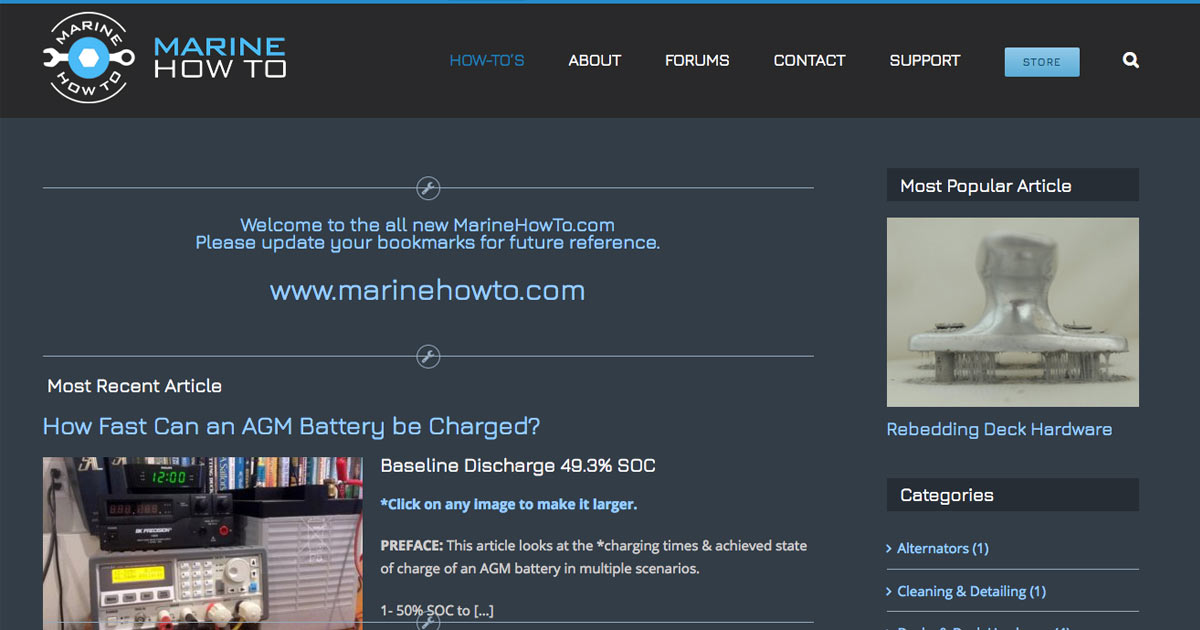G'day all
Bogart is a 2007 Hunter 45CC equipped with generator. I have 1 AGM starter battery (which starts both the motor and the generator) and 3 x AGM house batteries. My issue is that, when running the motor, the house batteries are not charging.
I have located the Guest battery isolator behind the main 12V circuit panel. It is model 2430, apparently no longer made. The battery isolator has 3 pins on the top, ordered 1, A and 2. A photo is attached.
There is no direct cable from the alternator to the battery isolator. Rather, the cable from the alternator goes to the starter motor then it runs to the starter battery on/off switch. (There are also cables running to the generator, irrelevant for current purposes.) On the other side of that switch the + goes to the starter battery itself and it is from that side of the switch that a cable goes to the battery isolator.
On top of the battery isolator, the cable from the starter motor/starter battery goes to the pin numbered 1. The house cable goes to the pin labelled A. There is nothing attached to the third pin numbered 2. Photo attached.
When running the motor (and I have turned off the solar charger/MPPT Controller) at about 2000rpm, on the voltmeter I am getting a reading of 14.28VDC at pin 1 but only 12.38VDC at pin labelled A. My assumption is that, after 14 years, the battery isolator has failed. I intend to buy a replacement part with a similar capacity.
However, I have not been able to find any manual for this specific Guest model, nor have I been able to find any reference to someone wiring up the isolator in this fashion. Everyone seems to have a separate cable from the alternator, with the starter and house batteries connected to the pins numbered 1 and 2 respectively.
Any useful suggestions (please don't tell me to rewire the boat) about replacement and wiring would be greatly appreciated.
Cheers.


Bogart is a 2007 Hunter 45CC equipped with generator. I have 1 AGM starter battery (which starts both the motor and the generator) and 3 x AGM house batteries. My issue is that, when running the motor, the house batteries are not charging.
I have located the Guest battery isolator behind the main 12V circuit panel. It is model 2430, apparently no longer made. The battery isolator has 3 pins on the top, ordered 1, A and 2. A photo is attached.
There is no direct cable from the alternator to the battery isolator. Rather, the cable from the alternator goes to the starter motor then it runs to the starter battery on/off switch. (There are also cables running to the generator, irrelevant for current purposes.) On the other side of that switch the + goes to the starter battery itself and it is from that side of the switch that a cable goes to the battery isolator.
On top of the battery isolator, the cable from the starter motor/starter battery goes to the pin numbered 1. The house cable goes to the pin labelled A. There is nothing attached to the third pin numbered 2. Photo attached.
When running the motor (and I have turned off the solar charger/MPPT Controller) at about 2000rpm, on the voltmeter I am getting a reading of 14.28VDC at pin 1 but only 12.38VDC at pin labelled A. My assumption is that, after 14 years, the battery isolator has failed. I intend to buy a replacement part with a similar capacity.
However, I have not been able to find any manual for this specific Guest model, nor have I been able to find any reference to someone wiring up the isolator in this fashion. Everyone seems to have a separate cable from the alternator, with the starter and house batteries connected to the pins numbered 1 and 2 respectively.
Any useful suggestions (please don't tell me to rewire the boat) about replacement and wiring would be greatly appreciated.
Cheers.




